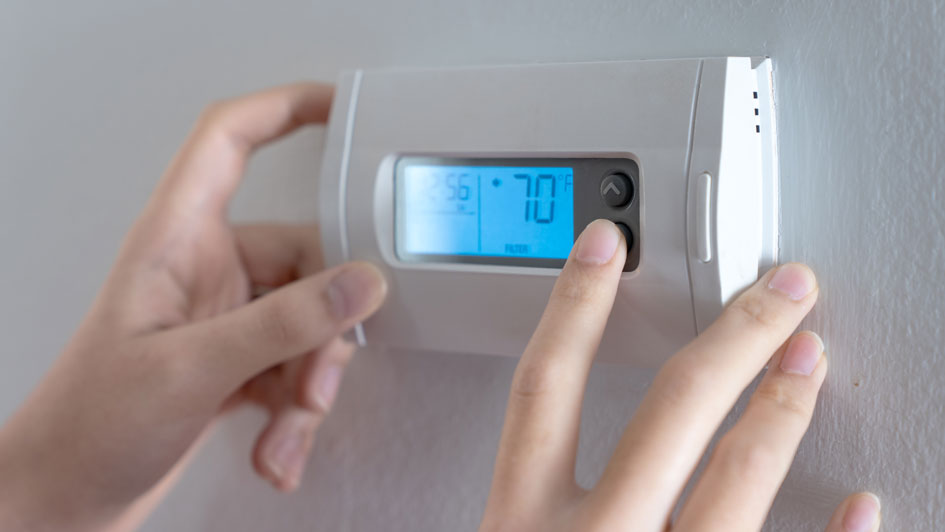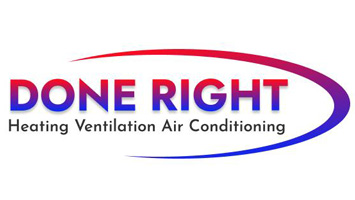
We all like saving money on our monthly utility bills, but you should know there’s a way to do it when you aren’t even home.
It starts with your thermostat. By using automatic schedules, you can help the thermostat plan for your preferred temperatures. That means you can have different temperature settings for when you’re at home, away or even when you’re asleep.
If you're willing to make these adjustments, you'll be able to enjoy comfortable temperatures while keeping more money in your pocket. Check out our guide on how your thermostat can be a source of energy savings:
While at Home
When you’re home, you want comfortable temperatures. That’s why it’s best to set your thermostat lower in the summer while inside to appreciate the cool air.
But the most energy-efficient temperatures for when you're in your home during the summer is in fact anywhere between 78 and 80 degrees Fahrenheit. By adjusting things a few degrees, you can stay cool while keeping your energy bill more manageable.
While Away
When setting the temperature for a vacation or other trip away from the house, it's extremely common to move the thermostat higher than normal.
If your home is in a shady spot in a cooler climate, you can set the thermostat to higher temperatures like 88 degrees while no one is home before you adjust it back to the sweet spot of 78-80 degrees after you return. This way, your air conditioning unit won’t be working overtime to provide cooling for a bunch of empty rooms.
While Sleeping
To enjoy a good night's sleep during the summer, you want a temperature that's nice and cool. A good rule of thumb is between 68-72 degrees Fahrenheit. There's less risk of getting too hot or too cold when you are trying to get some rest.
Other Ways to Use Less Energy:
- Smart thermostat installation: Using a smart thermostat in the summer helps save money on energy costs as it forms temperature schedules according to your lifestyle and home environment. It'll take care of making changes while you are home or sleeping, before allowing it to warm up when no one is around. With models like the Lennox iComfort, you can adjust the temperature remotely through your smartphone, tablet or laptop. Requesting smart thermostat installation in your West Allis & Milwaukee area home is an effortless way to set the correct temperature no matter where you are.
- Update your existing HVAC system: Upgrading your HVAC system is another great option for long-term energy savings. If a system boasts high energy efficiency, lower utility bills won't be far behind since it requires less energy to reach your preferred temperatures. Air conditioning installation in West Allis & Milwaukee area is only a phone call away, so don't hesitate to reach out to local pros like Done Right Air who can set you up for success.
- Schedule annual AC maintenance: Investing in or ignoring regular air conditioning maintenance in West Allis & Milwaukee area can have a big impact on your monthly energy use. By regularly cleaning the coils, checking for damage and clearing air vents of dust and debris, this can help your HVAC system run more efficiently. Increasing efficiency also limits strain on key parts and lowers operational costs, lowering total energy use and eventually the total monthly bill.
- Replace your air filter regularly: Cleaning or replacing the air filter regularly saves money by helping air flow efficiently through your air conditioner. When filters become clogged, your air conditioner will have to work harder, and this greater strain could shorten the system’s life span and lead to breakdowns.
- Verify your attic has enough insulation: Insulation is a vital part of maintaining an energy-efficient home, securing the hot air outside and the cool air inside over the summer. The North American Insulation Manufacturers Association (NAIMA) offers an official recommendation stating homeowners in souther states should possess at least 13-14 inches of insulation, while those in northern U.S. states should have 16-18 inches.
- Review your air ducts: Damage to the ventilation is capable of increasing your energy bills much more than 20 percent, plus it can potentially allow harmful emissions from your water heater, clothes dryer and other appliances throughout your home. Finding any leaks fast and sealing them can address both concerns.
- Seal all other leaky spots in your home: Sealing up other leaks in your home with caulk, foam sealant or weather-stripping can help keep it cooler on hot summer days. It’s also important to check for any gaps around windows, doors and even outdoor fixtures. Making time to seal leaks now can help you save a lot over time.
